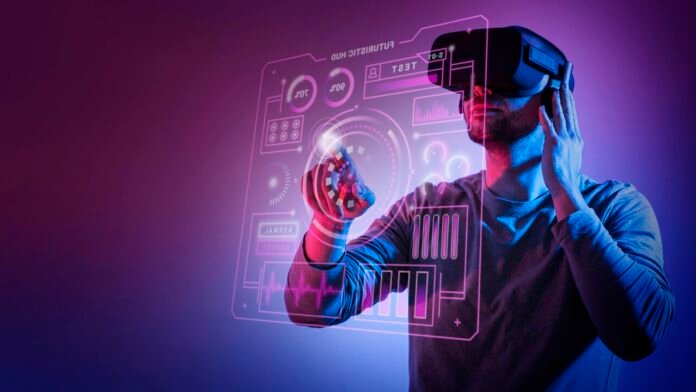Introduction
In today’s digital age, technology continues to advance at an unprecedented rate, transforming the way we interact with the world around us. Augmented reality (AR) is one such groundbreaking technology that has gained significant attention and is increasingly bridging the gap between the virtual and real world. Augmented reality refers to the integration of digital information, such as images, videos, and sounds, into our real-world environment, enhancing our perception and interaction with reality. This article explores the fascinating world of augmented reality, its applications, and the profound impact it has on various industries.
Augmented Reality: A Revolutionary Technology
Augmented reality has emerged as a revolutionary technology, revolutionizing the way we experience and interact with the world. By seamlessly blending digital content with the real world, augmented reality enhances our senses and provides immersive experiences that were once unimaginable. Whether it’s overlaying virtual objects onto our physical environment or bringing educational content to life, augmented reality has the potential to transform numerous industries and reshape our daily lives.
Applications of Augmented Reality
Gaming and Entertainment
One of the most popular applications of augmented reality is in the gaming and entertainment industry. Augmented reality games, such as Pokémon Go, have captivated millions of users worldwide, allowing them to catch virtual creatures in their real-world surroundings. This fusion of virtual and real-world elements creates a unique and interactive gaming experience that blurs the boundaries between the two realms.
Education and Training
Augmented reality also holds immense potential in the field of education and training. By overlaying virtual content onto real-world objects, augmented reality can enhance the learning experience and make it more engaging and interactive. Students can explore historical landmarks, dissect virtual organisms, or practice complex procedures in a simulated environment, all through the power of augmented reality.
Healthcare
The healthcare industry has embraced augmented reality as a tool to improve patient care and enhance medical training. Surgeons can utilize augmented reality during complex procedures to overlay vital information, such as patient vitals or anatomical diagrams, onto their field of view, providing real-time guidance and improving surgical accuracy. Additionally, augmented reality can be used for rehabilitation purposes, assisting patients in their recovery process by creating immersive and motivating therapy sessions.
Architecture and Design
Augmented reality is transforming the way architects and designers visualize and present their creations. With AR, architects can overlay virtual models of buildings onto physical spaces, allowing clients to experience the proposed designs in a more realistic and immersive manner. This technology enables architects to make informed decisions and helps clients better understand and visualize the end result, ultimately leading to more successful projects.
Augmented Reality in Everyday Life
The influence of augmented reality is not limited to specific industries; it has the potential to impact our daily lives in various ways. Imagine walking down the street and instantly accessing information about nearby restaurants, stores, or historical landmarks simply by pointing your smartphone or wearing AR-enabled glasses. Augmented reality can transform our shopping experiences by enabling virtual try-on of clothing and accessories or providing personalized recommendations based on our preferences and location. From enhancing communication and collaboration to revolutionizing navigation and travel, augmented reality has the power to shape the future of our everyday interactions.
FAQs (Frequently Asked Questions)
What is augmented reality?
Augmented reality refers to the integration of digital information into our real-world environment, enhancing our perception and interaction with reality. It overlays virtual content, such as images, videos, or sounds, onto our physical surroundings, creating an immersive and interactive experience.
How does augmented reality work?
Augmented reality utilizes various technologies, such as cameras, sensors, and displays, to blend virtual content with the real world. By tracking the user’s location and movements, AR devices can overlay digital elements onto the user’s field of view, seamlessly merging the virtual and real worlds.
What devices are used for augmented reality?
Augmented reality can be experienced through a range of devices, including smartphones, tablets, smart glasses, and headsets. Smartphones and tablets are the most commonly used devices, as they offer a portable and accessible platform for AR applications.
What are the advantages of augmented reality?
Augmented reality offers numerous advantages, including enhanced learning experiences, improved visualization and decision-making in design and architecture, immersive gaming and entertainment experiences, and improved medical training and patient care. It has the potential to transform industries and revolutionize everyday interactions.
Are there any limitations to augmented reality?
While augmented reality holds immense potential, there are still some limitations to consider. These include the need for advanced hardware and software, potential privacy concerns, and the challenge of seamlessly integrating virtual content with the real world. However, as technology continues to advance, these limitations are gradually being addressed.
How will augmented reality shape the future?
Augmented reality is poised to play a significant role in shaping the future of various industries and our daily lives. From revolutionizing gaming and entertainment to transforming education, healthcare, and design, augmented reality has the potential to enhance our experiences, improve efficiency, and bridge the gap between the virtual and real world.
Conclusion
Augmented reality has emerged as a powerful technology that is bridging the gap between the virtual and real world. Its applications span across industries, from gaming and entertainment to education, healthcare, and design. Augmented reality enhances our perception and interaction with reality, creating immersive and interactive experiences that have the potential to revolutionize our daily lives. As technology continues to advance, augmented reality will play an increasingly significant role, shaping the way we experience and interact with the world around us.











